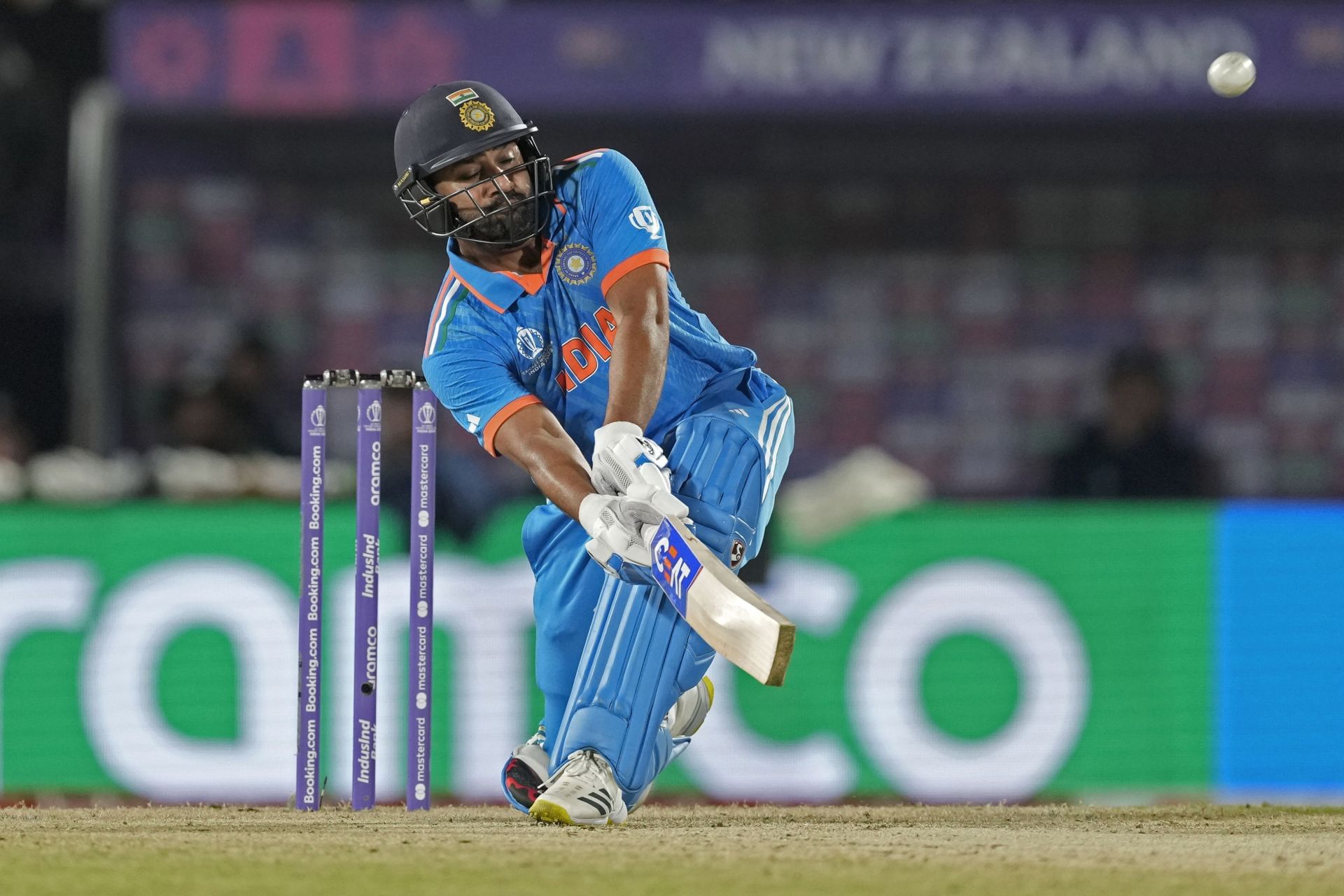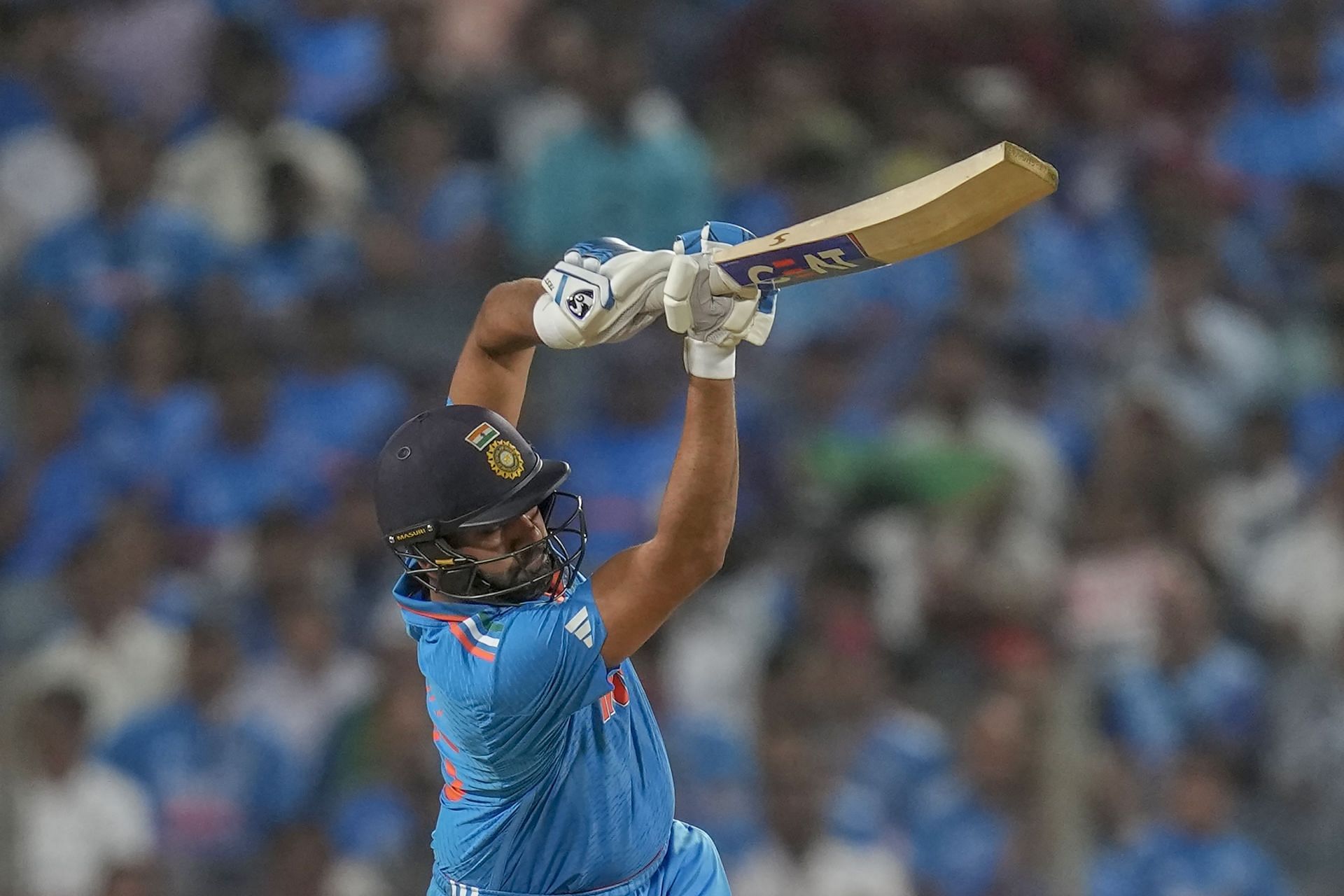
World Cup 2023: Rohit Sharma and the near-impossible application of the Brendon McCullum blueprint
How can Rohit Sharma and Brendon McCullum, two players who are so similar, be so different?
McCullum captained a home team in a World Cup back in 2015. He opened the batting, danced down the track to terrorize opposition new-ball bowlers, and executed the proverbial leading from the front. He also cultivated a conducive team environment and massaged the brand of cricket he wanted to play deep into the muscles of his men, building a reputation that has stood the test of time.
Eight years later, in 2023, Rohit is doing all of these things. India seem to have found a different identity under their skipper, who is the side's second-highest run-scorer and primary high-impact batter in the powerplay. Uncannily, he has even waltzed down the pitch and taken the best bowlers to the cleaners, like his Kiwi counterpart.
Rohit and McCullum are both in the top five when it comes to sixes hit in international cricket. Yet, despite all these likenesses, they are chalk and cheese with regard to just about everything else.
The Indian opener is a batter who parks himself in his wide stance. He waits for the bowler to go through the laborious task of walking to the top of the run-up, starting a slow jog, reaching top speed as the popping crease approaches, entering the delivery stride, and grunting while chucking the ball many a yard.
None of that seems to matter to Rohit, who is stiller than a skyscraper in the wind. Almost apologetically, he clicks into action so late that the bowler would be forgiven for thinking the keeper would be the next man to touch the ball. And then he deposits the ball into the second tier with a poise that can only be rivaled by the most talented ballet dancer.
McCullum, on the other hand, asserted his authority like a prizefighter in a cage back in 2015. He danced down with a certain brash fluidity, with the aggression of a bull who had mistaken big Steven Finn's sky blue England shirt for a hastily waved red cloth. And when his bat met the ball, you saw an almighty thump and not a gentle caress.
Rohit seems to have adopted the McCullum template and added a personal touch to it, an unmistakable Rohit Sharma touch that makes cricketing purists ooh and aah in the comforts of their homes while reluctantly embracing the madness of modern-day white-ball cricket. They might not be blown away by the ferocity of his strokeplay, but they'll lean back in their armchairs and sigh with contentment.
The numbers that make Rohit Sharma's 2023 historic
![Rohit Sharma, pointing at versions of ODI openers better than him [in picture]](https://staticg.sportskeeda.com/editor/2023/10/c4c7c-16981637923721-1920.jpg?w=500)
In ODIs in 2023, Rohit has plundered runs in the powerplay at a strike rate of 113.8. Only three batters in the history of the format have scored at a faster clip in a calendar year. #3 is Jonny Bairstow, #2 is Virender Sehwag, and #1?
You guessed it right - Brendon McCullum, who struck at 163.4 in 2015. 2015, the same year of the World Cup in which McCullum carted opposition bowlers all over the park in a symphony of destruction. For context, three of the top 30 highest strike rates in an ODI innings belong to him, one of which is his 77 off 25 against England.
The man who's second on the list is a batter no one's been able to hold a candle to in the destructiveness department by anyone from his country - until now. Sehwag, widely regarded as India's most fearsome opener ever, a man who was ahead of his time and threw scant importance on personal milestones, struck at an incredible 131.4 in 2009.
Rohit also has the highest average in the first 10 overs among these players. He averages 98.8, a number that dwarfs those of McCullum (36.7), Sehwag (46) and Bairstow (62.2).
To put that into context, in a single calendar year, only one batter in the history of ODI cricket has managed to average more than half of what Rohit has in 2023 while maintaining a strike rate higher than his. In other words, barely anyone has been able to come close to the Indian skipper when it comes to marrying attacking intent (as well as execution) and wicket preservation.
Rohit is batting on a different plane right now, and it's about time that we address him with the same reverence that is usually reserved for displays like McCullum's from eight years ago.
Rohit Sharma, ODI opening's gold-medal gymnast

Strangely, for someone whose middle name could be "balance", this balancing act between aggression and wicket preservation is something Rohit struggled with in the years following the 2019 World Cup. He was an obvious run accumulator with a strike rate of 89.92 in that calendar year, facing 59.17 balls on average in an innings.
Rohit fought against his instincts and nearly a decade's reinforcement to become a player more suited to the demands of the modern game, but he didn't know how far to turn the dial before the castle came crashing down. Excluding 2020 and 2021 due to their sample sizes (three matches each), his balls faced per innings dropped to 27.25 in 2022 as he attempted to up the ante.
Between the start of 2020 and today, Rohit's ODI career strike rate has increased from 88.85 to 91.41. That might not seem like much at first glance, but keep in mind that he had already played 221 ODIs and scored 8,954 runs before this period. For his career strike rate to increase by a factor of nearly three over just 33 innings, he had to have made a drastic change.
Miraculously, Rohit has managed to arrest the brief slump that his average underwent. It was 49.16 at the start of 2021 and dropped to the mid-48s by the time 2023 rolled around. As of October 2023, though, it's the highest it's been since the start of 2020. And he has faced almost 40 balls on average in an innings this year.
In 2019, ODIs involving Rohit had an average run rate of 5.7. In 2023, that number has shot up to 6.11 - a 7.2 percent increase. Rohit's strike rate, meanwhile, has increased by a whopping 29.7 percent between the two years, proving that he has not only been several steps ahead of the change but also catalyzed it.
Rohit will be associated with a great deal of things in his career, and gymnastics is not one of them. But it might be what he has become the best at. He has managed to combine grace, balance, flexibility, power and explosiveness in a way that no other batter has managed before in the history of the ODI game.
And more importantly, like all great players, Rohit has done that through a conscious cycle of reinvention. It didn't come naturally to him like it did to Sehwag and McCullum, and he didn't necessarily need to buy into the run-scoring revolution. But he did, and he persisted until he succeeded.
Is this Rohit Sharma's World Cup?

The 2015 World Cup was so nearly Brendon McCullum's World Cup. In a heartbreaking note penned five years after the final, in which he bagged a duck, the former Kiwi skipper wrote:
"You can’t have regrets. It is what it is. I had dreamed that dream so many times; I was super excited, not nervous at all. The thing I forgot is, I forgot to watch the ball! I’d done everything else to be able to live that dream but then at that moment I just forgot the most basic aspect of cricket."
This is turning out to be Rohit Sharma's World Cup. You thought it would be 2019, given that he plundered hundred after hundred, but McCullum's successors foiled that plot. Having already beaten New Zealand once in the 2023 edition, the Men in Blue seem all set to go all the way this time.
Rohit definitely won't change his maverick approach in the knockouts, assuming India reach that stage. Missing out on the country's home triumph back in 2011 probably still prickles a corner of his heart somewhere, and he must have "dreamed that dream so many times."
Will he watch the ball?